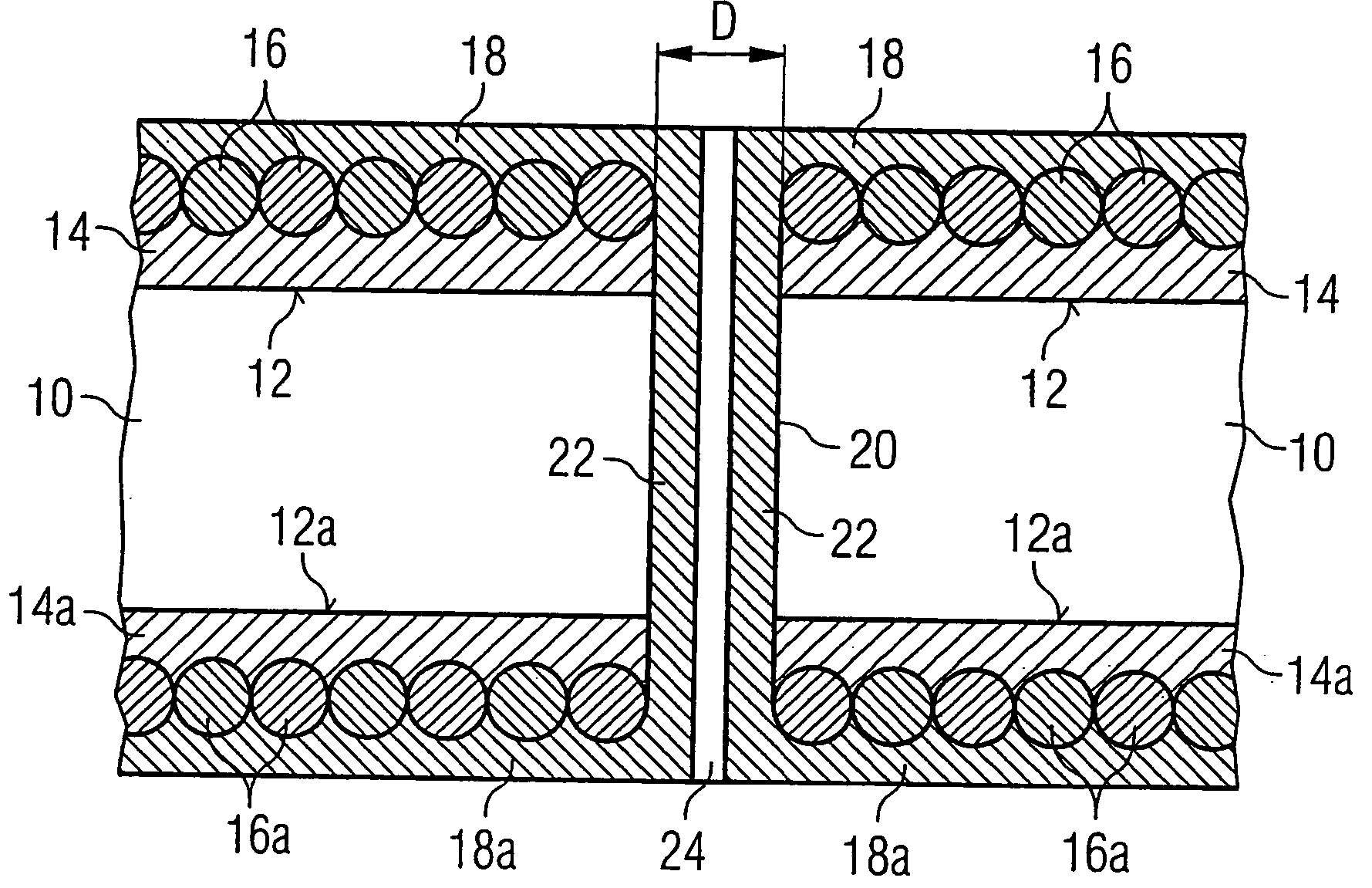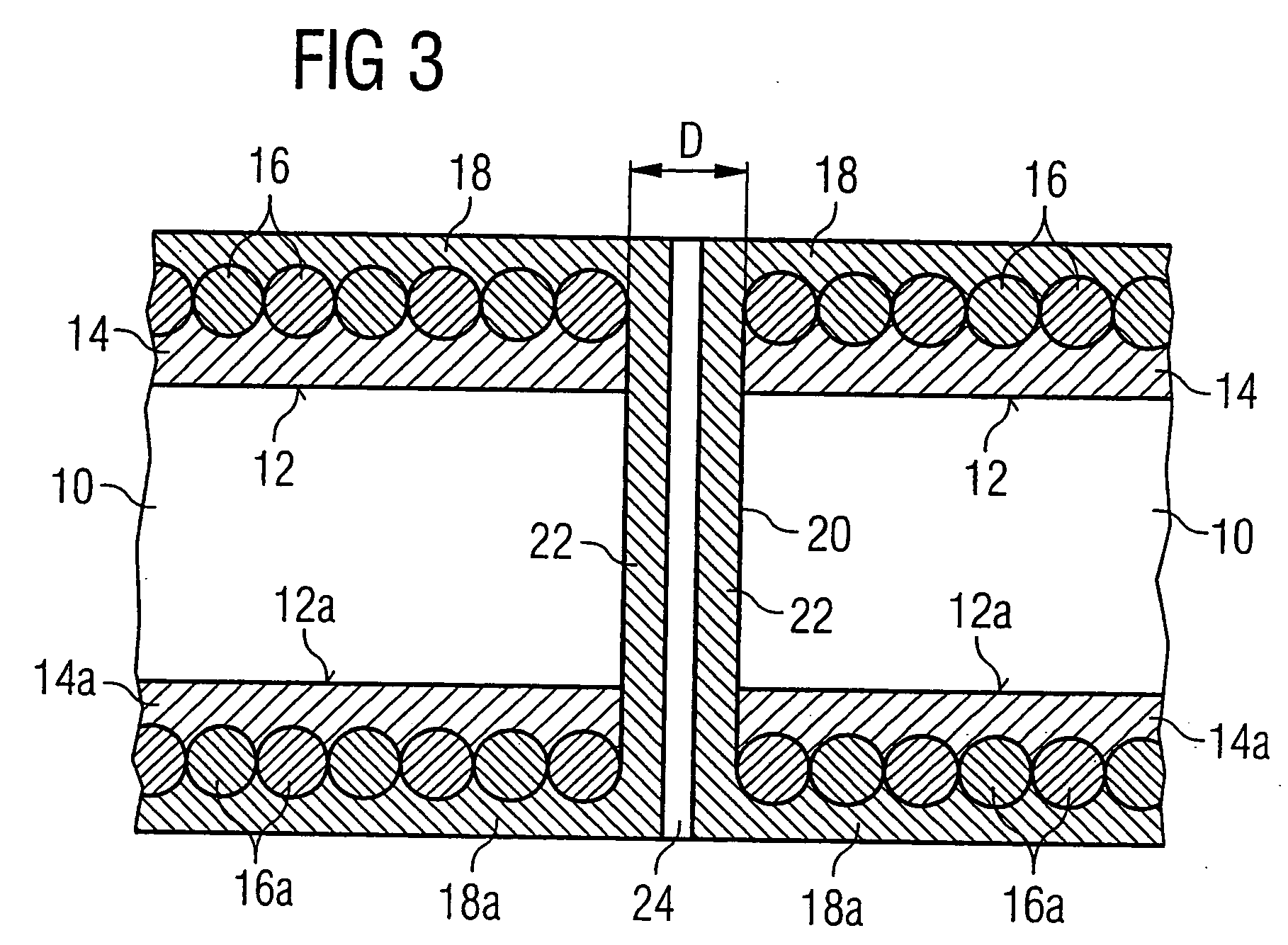Process for producing a metal layer on a substrate body, and substrate body having a metal layer
a metal layer and substrate technology, applied in the direction of non-resonant long antennas, textiles and papermaking, record information storage, etc., can solve the problems of high consumption of chemicals, large waste of raw materials used (aluminium layer) on account of subtractive process, and low throughput rate. achieve the effect of simple and inexpensive production, high reliability and easy production
- Summary
- Abstract
- Description
- Claims
- Application Information
AI Technical Summary
Benefits of technology
Problems solved by technology
Method used
Image
Examples
Embodiment Construction
[0045]FIG. 1 shows a sectional illustration of part of a substrate body 10, to the surface 12 of which a bonding layer 14 has been applied in a first process step. In a subsequent, second process step, conductive particles 16 have been applied close together to the optionally structured bonding layer 14. In the present exemplary embodiment, the conductive particles 16 are round in cross section. However, the cross section of the conductive particles could be of any desired form. The conductive particles 16, which consist, for example, of copper, iron, nickel, gold, silver, aluminium, brass or any other desired alloy, are fixed to the bonding layer 14. The conductive particles could also be graphites or polymers which are in powder form and are applied, for example, by being blown, sprayed, rolled or brushed on.
[0046] The conductive particles 16 are fixed to the bonding layer 14 for example as a result of the application of the particles 16 taking place during a phase in which the b...
PUM
| Property | Measurement | Unit |
|---|---|---|
| Thickness | aaaaa | aaaaa |
| Pressure | aaaaa | aaaaa |
| Adhesion strength | aaaaa | aaaaa |
Abstract
Description
Claims
Application Information
 Login to View More
Login to View More - R&D
- Intellectual Property
- Life Sciences
- Materials
- Tech Scout
- Unparalleled Data Quality
- Higher Quality Content
- 60% Fewer Hallucinations
Browse by: Latest US Patents, China's latest patents, Technical Efficacy Thesaurus, Application Domain, Technology Topic, Popular Technical Reports.
© 2025 PatSnap. All rights reserved.Legal|Privacy policy|Modern Slavery Act Transparency Statement|Sitemap|About US| Contact US: help@patsnap.com



